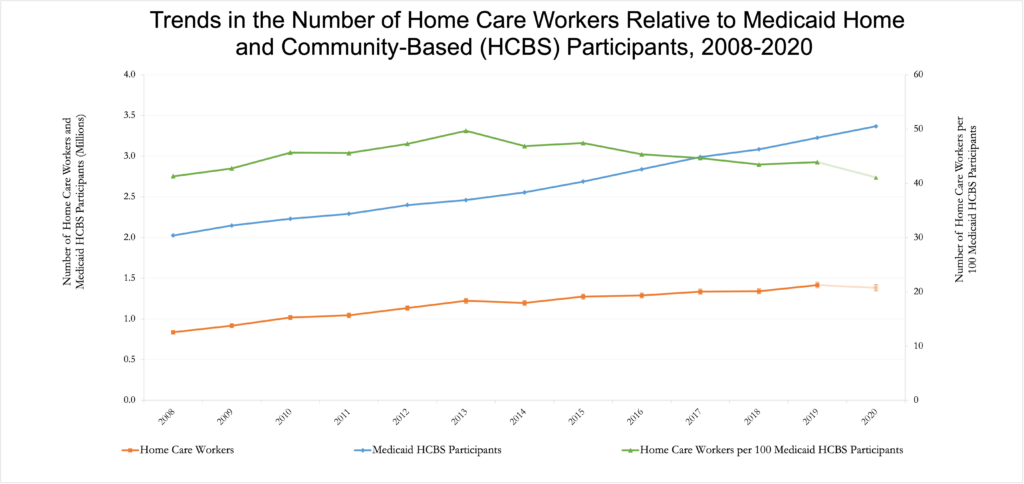
How Medicaid Cuts Could Force Millions Into Nursing Homes
If Federal Support Falls, States May Slash Home- and Community-Based Services — Pushing Vulnerable Americans Into Nursing Homes They Don’t Want or Need
Improving Care for Older Adults
Blog Post

More than 9 million people use long-term services and supports per year in the U.S. And increasingly, this care is delivered through home- and community-based services (HCBS), with 66% funded by Medicaid. At the same time, news outlets report there are shortages of home care workers.
In a new Health Affairs study, LDI Associate Fellow Amanda Kreider and LDI Executive Director Rachel M. Werner examined national trends in the size of the home care workforce relative to enrollment in Medicaid-funded HCBS programs between 2008 and 2020.
The authors found that the workforce grew from 840,000 to 1.42 million from 2008 to 2019 (orange line). Simultaneously, the number of people participating in HCBS programs increased more rapidly (blue line). As a result, the number of home care workers per 100 Medicaid HCBS participants decreased by 11.6% from 2013-2019 (green line), suggesting that the need for home care workers outstripped the supply.
As policymakers weigh their options for expanding and supporting this workforce, Kreider and Werner note that states must prioritize increasing workers’ wages and benefits. In addition, policymakers should raise Medicaid reimbursement rates for HCBS, as low Medicaid rates may act as a cap on wages for home care workers.
The study, “The Home Care Workforce Has Not Kept Pace With Growth in Home-and-Community-Based Services” was published on April 19, 2023 in Health Affairs. Authors include Amanda Kreider and Rachel M. Werner.


If Federal Support Falls, States May Slash Home- and Community-Based Services — Pushing Vulnerable Americans Into Nursing Homes They Don’t Want or Need

Men are Stepping Up at Home, but Caregiving Still Falls On Women and People of Color LDI Fellow Says

Economist Norma Coe’s Caregiving For Relatives Informed Her Research

The Decline Since 2020 May Signal Gaps in Service and Access

Penn Event Explores the Limits of Chronological Aging and Related Issues

LDI Executive Director Discusses New Findings on Medicare Beneficiaries’ Use of Home Health